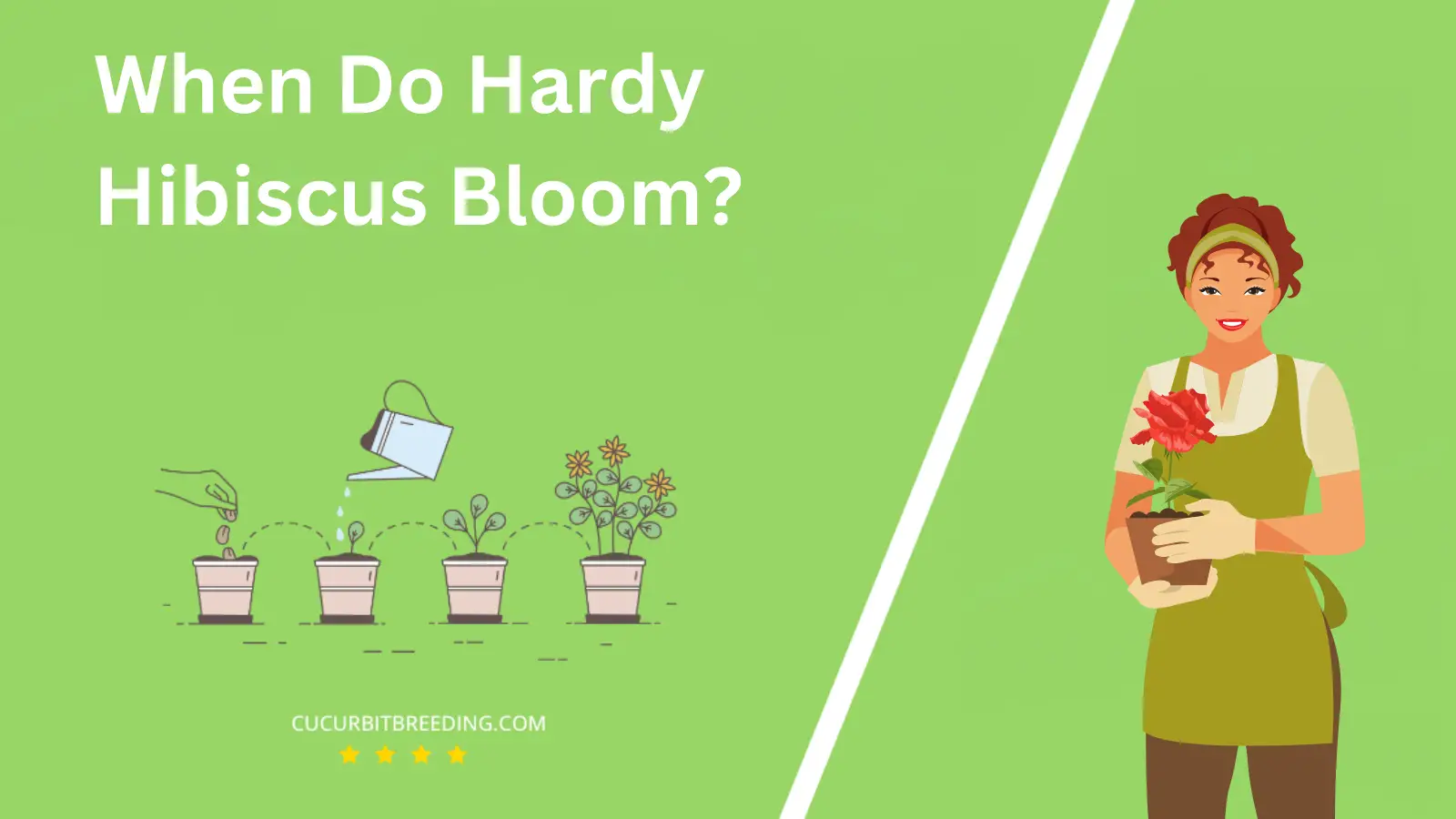
If you’re wondering, “When do Hardy Hibiscus bloom?”, you’re not alone. These vibrant flowers are a delight to any garden, and understanding their blooming pattern can help you ensure they’re at their most beautiful.
There’s a magical moment when these flowers unfurl their petals, but timing isn’t always straightforward. Let’s dive into the world of Hardy Hibiscus and discover their blooming secrets.
When Do Hardy Hibiscus Bloom?
Hardy Hibiscus typically starts to bloom in mid to late summer, typically around July, and continues until early fall. The actual blooming period can vary depending on the specific variety of the plant, its growing conditions, and the local climate.
| Stage | Description |
|---|---|
| Germination | Spring (March-May) |
| Growth | Summer (June-August) |
| Blooming | Summer (June-August) |
| Dormancy | Winter (December-February) |
How Long Do Hardy Hibiscus Bloom?
The blooming period of Hardy Hibiscus typically begins in mid to late summer and continues until the first frost of fall. This species of Hibiscus, known for its hardiness, can bloom for several weeks if the conditions are optimal. The exact duration of its blooming can vary depending on the specific type, soil quality, and local weather conditions.
How Light Affects Hardy Hibiscus Blooms?
Light significantly affects the blooming of Hardy Hibiscus plants. These plants thrive best in full sun, which means they need at least six to eight hours of sunlight in a day. Apart from facilitating photosynthesis, sufficient sunlight also aids in the production of buds and influences the timing and profusion of blooms. Conversely, inadequate light exposure can lead to fewer or no flowers and weak, leggy growth. However, Hardy Hibiscus flowers can tolerate partial shade too, but remember this may affect the amount of blooms produced. To maximize flowering, ensure your Hardy Hibiscus receives optimal sunlight while also providing necessary care in terms of watering and fertilizer application.
Will Hardy Hibiscus Bloom the First Year You Plant Them?
Yes, Hardy Hibiscus will typically bloom in the first year they are planted, given that they are planted early in the season and are provided the necessary care which includes adequate sunlight, water, and nutrients. However, the blooming might not be as profuse as in subsequent years. The plant often needs time to establish itself before it can produce a large number of blooms.
Will Hardy Hibiscus Bloom Every Year?
Yes, Hardy Hibiscus will bloom every year. This plant variety is known for its ability to withstand harsh conditions, and it usually starts blooming mid-summer and continues until the first frost of fall. However, it’s important to note that for optimal blooming, the Hardy Hibiscus requires plenty of sunlight and well-drained soil.

Should I Deadhead Hardy Hibiscus Blooms?
Yes, you should deadhead Hardy Hibiscus blooms. Deadheading, the process of removing faded blooms, helps the plant conserve energy that it would otherwise use to produce seeds. This energy is then redirected to promote further blooming and overall plant health. However, if you prefer the plant to self-seed, you may choose not to deadhead.
Top Reasons Mature Hardy Hibiscus May Stop Flowering

The mature Hardy Hibiscus may stop flowering for several reasons. Insufficient sunlight is one of the most common causes. This plant typically requires at least six hours of full sunlight each day to produce blooms.
Another reason could be inadequate fertilization. Hardy Hibiscus needs a balanced diet of nutrients to flower. Not enough phosphorus, in particular, can prevent blooming.
Incorrect pruning can also cause a lack of flowers. If you prune at the wrong time of year, you may inadvertently remove the new growth that would produce the next round of blooms.
Lastly, stress from pests or disease can halt flower production. A plant that is busy fighting off an infestation or illness doesn’t have the resources to produce blooms.